Selecting the right fuel for an industrial boiler is a critical decision that affects operating costs, efficiency, emissions, and system longevity. If the boiler is not compatible with the chosen fuel—or if future fuel flexibility is not considered—plants may face expensive retrofits, regulatory compliance challenges, and unexpected downtime.
Industrial boilers can be designed for single-fuel or multi-fuel operation, with compatibility for coal, natural gas, biomass, oil, electricity, or a combination of these. The actual fuel options depend on the boiler type, burner configuration, furnace design, and emission control systems. Many modern boilers feature dual-fuel or multi-fuel capabilities to provide operational flexibility, energy cost optimization, and resilience against fuel supply disruptions.
By understanding fuel compatibility, operators can make strategic procurement choices that support both short-term production needs and long-term sustainability goals.
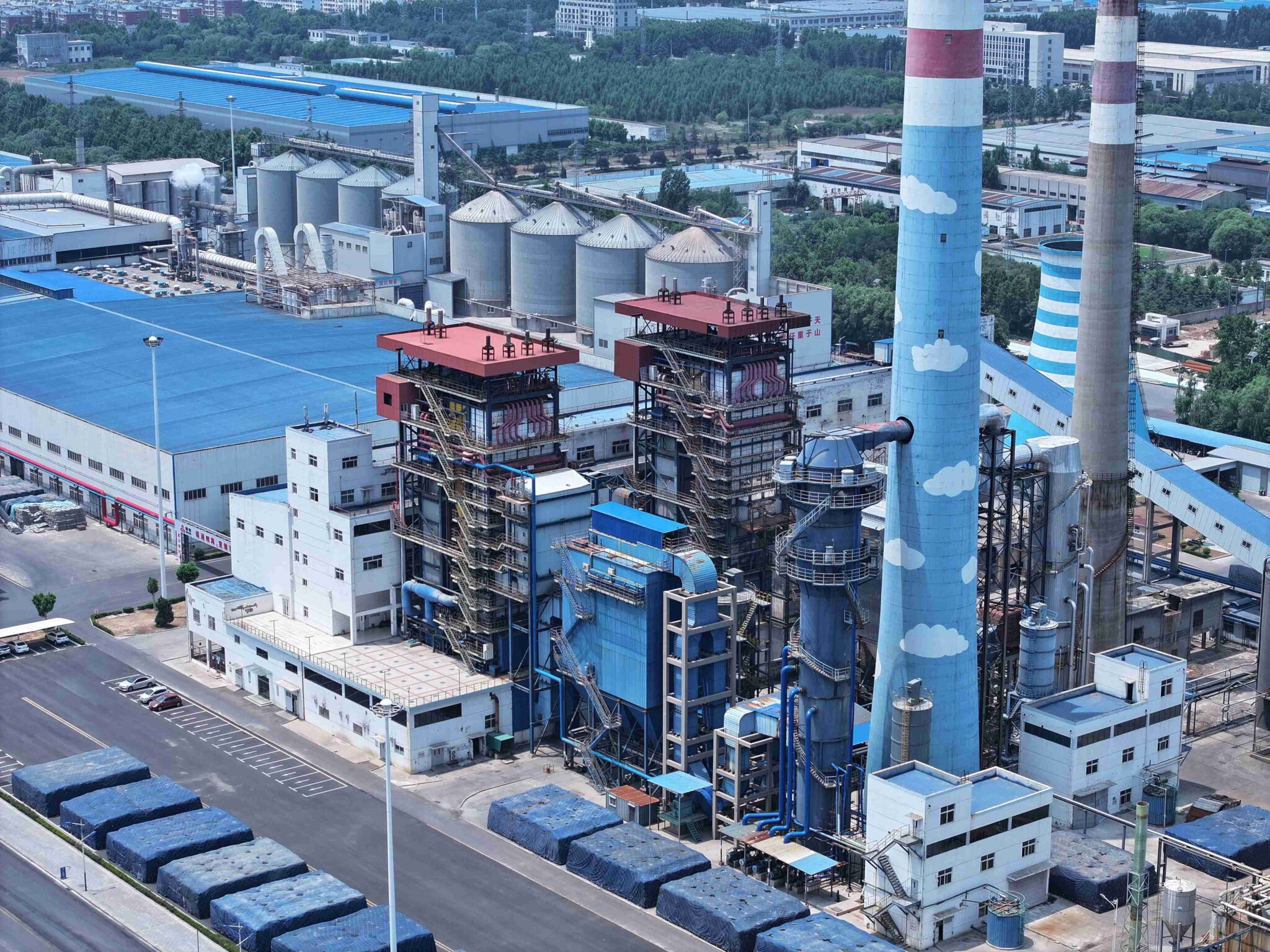
What Fuels Are Commonly Supported by Different Industrial Boiler Types?
Selecting the right fuel for your industrial boiler is a critical operational and financial decision. Choosing a fuel your boiler isn’t optimized for can lead to poor efficiency, excessive maintenance, or even safety hazards. Each boiler type is engineered to burn certain fuels efficiently, with specific combustion chamber designs, burner technologies, and ash or emission handling systems.
Industrial boilers commonly support fuels such as natural gas, fuel oil, coal, biomass, and waste heat, with compatibility depending on boiler type: fire-tube and water-tube boilers are typically designed for gas, oil, or dual-fuel use; fluidized bed boilers are ideal for coal, biomass, and waste-derived fuels; and waste heat recovery boilers utilize exhaust gases from other processes rather than direct fuel combustion.
Understanding these alignments ensures you select equipment that delivers optimal efficiency, longevity, and compliance with emissions standards.
A gas-designed boiler can easily burn coal by adding a coal feeder.False
Boilers are designed with combustion geometry, heat exchange surfaces, and ash handling systems tailored to specific fuels; switching from gas to coal requires major redesign, not just adding a feeder.
🔍 Fuel Compatibility by Boiler Type
| Boiler Type | Common Fuels Supported | Notes on Operation |
|---|---|---|
| Fire-Tube Boiler | Natural gas, light/heavy fuel oil, LPG, dual-fuel | Simple, lower-pressure applications; quick start-up; limited adaptability to solid fuels |
| Water-Tube Boiler | Natural gas, oil, coal, biomass (with modifications), dual-fuel | High-pressure, high-capacity; widely used in power and process industries |
| Fluidized Bed Boiler (CFB/BFB) | Coal, biomass, waste-derived fuels, petroleum coke | Excellent fuel flexibility; high combustion efficiency; low NOx and SOx emissions |
| Waste Heat Recovery Boiler | Process exhaust gases, gas turbine exhaust, kiln off-gas | No direct fuel combustion; depends on heat source quality and consistency |
| Biomass Boiler | Wood chips, pellets, agricultural waste, energy crops | Requires specific feeding and ash handling systems |
| Electric Boiler | Electricity | Zero on-site emissions; high operating cost unless renewable or low-cost electricity |
📊 Typical Fuel Use Across Industries
| Industry | Preferred Fuel(s) | Reason |
|---|---|---|
| Food & Beverage | Natural gas, LPG | Clean combustion, minimal odor or contamination risk |
| Chemical Processing | Natural gas, waste heat | Stable heat source, lower emissions |
| Pulp & Paper | Biomass, black liquor (waste from pulp process) | Low fuel cost, sustainability |
| Power Generation | Coal, natural gas, biomass | Large-scale capacity, fuel availability |
| Cement & Mining | Coal, petroleum coke, waste fuels | High-temperature process, low-cost fuel sourcing |
🛠 Factors Affecting Fuel-Boiler Matching
Combustion System Design – Burner or grate type must match fuel burn characteristics
Heat Transfer Surfaces – Fouling tendency varies by fuel, affecting cleaning requirements
Emission Controls – Sulfur, nitrogen, and particulates vary significantly by fuel type
Fuel Handling Systems – Solid fuels need conveyors and storage; gas needs piping and regulation
Local Fuel Availability & Price – Impacts long-term operational cost
✅ Practical Tips for Fuel Selection
Always choose a boiler designed for your primary fuel to maximize efficiency
If flexibility is needed, consider dual-fuel burners or fluidized bed designs
Evaluate fuel cost trends and supply chain reliability before committing
Ensure emission compliance with fuel-specific control systems
A fuel-boiler mismatch can cost you millions over the system’s lifetime in inefficiency and downtime. By understanding the inherent fuel compatibilities of each boiler type, you can make a more informed, future-proof investment.
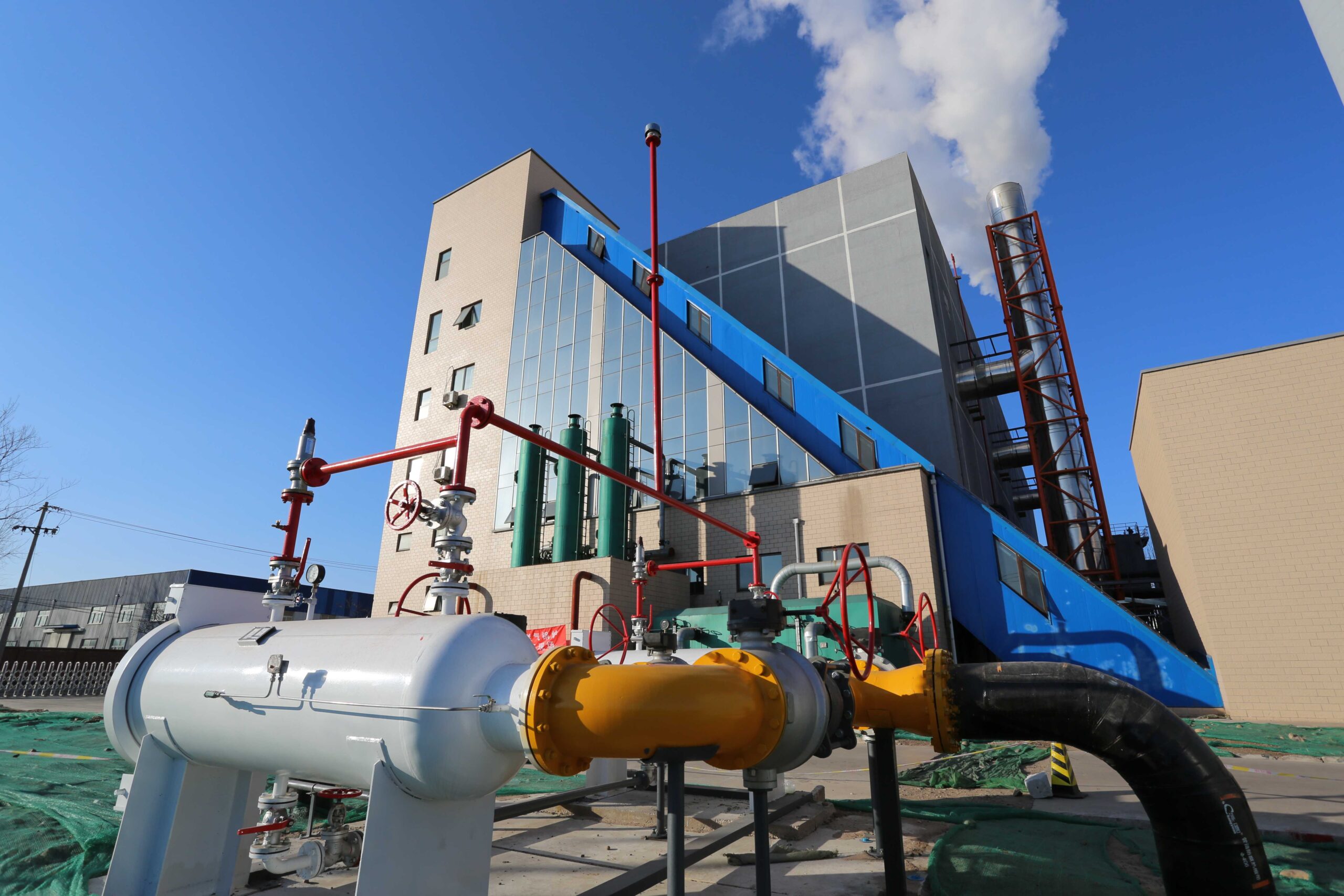
How Does Burner and Furnace Design Determine Fuel Compatibility?
Choosing the wrong fuel for your boiler’s burner and furnace design is like putting diesel in a gasoline car—it won’t just run poorly; it could damage the system. In industrial boilers, the burner and furnace aren’t just where combustion happens—they’re engineered for the specific flame shape, heat release rate, and ash or residue characteristics of each fuel. Mismatch them, and you risk low efficiency, excessive emissions, and high maintenance costs.
Burner and furnace design determine fuel compatibility by matching the combustion air supply, flame geometry, heat release rate, and ash handling to the physical and chemical properties of the fuel—gas burners require precise mixing and ignition systems, oil burners need atomization equipment, solid fuel furnaces demand grates or fluidized beds, and each design controls flame stability, heat transfer, and emissions for the intended fuel.
Understanding this link is essential before attempting fuel changes or retrofits.
Any boiler burner can operate efficiently on any fuel if adjusted correctly.False
Burners are specifically designed for certain fuel properties—changing fuels may require complete burner and furnace redesign, not just tuning.
🔍 Fuel-Specific Design Considerations
| Fuel Type | Burner/Furnace Design Requirements | Key Challenges |
|---|---|---|
| Natural Gas | Premix or diffusion gas burners; precise air-fuel ratio control; stable flame detection systems | Avoiding NOx formation while ensuring complete combustion |
| Fuel Oil | Pressure or steam-assisted atomizing burners; heated fuel lines; combustion air preheat | Atomization quality; soot formation; sulfur emissions |
| Coal | Pulverized coal burners or stoker-fired grates; furnace volume sized for slower combustion; ash removal systems | Slagging, fouling, fly ash handling |
| Biomass | Moving grate, vibrating grate, or fluidized bed furnaces; moisture handling; flexible air zones for uneven fuel combustion | Variable fuel quality; higher volatile matter; slagging risk |
| Waste Fuels | Custom burners or CFB designs; robust refractory lining; advanced emission control systems | Highly variable fuel properties; contamination risks |
📊 Combustion Property & Design Match
| Fuel Property | Design Adaptation Needed | Example |
|---|---|---|
| Volatility (ease of ignition) | Adjust ignition system & air staging | Gas ignites easily → simple pilot flame system |
| Ash content | Install ash removal and larger furnace volume | Coal → slag tapping and soot blowing |
| Moisture content | Pre-dry fuel or design for higher furnace temp | Biomass → extended combustion zone |
| Sulfur content | Emission control devices | Oil/coal → flue gas desulfurization |
| Burn rate | Match heat release to furnace geometry | Pulverized coal → large radiant section |
✅ Practical Advice for Buyers
Always match burner and furnace design to your primary fuel first
For multi-fuel capability, use fluidized bed or dual-fuel burner systems
Consult the OEM before any fuel switch—minor differences in flame temperature or ash content can cause serious long-term damage
Evaluate emission control requirements for each fuel type at the design stage
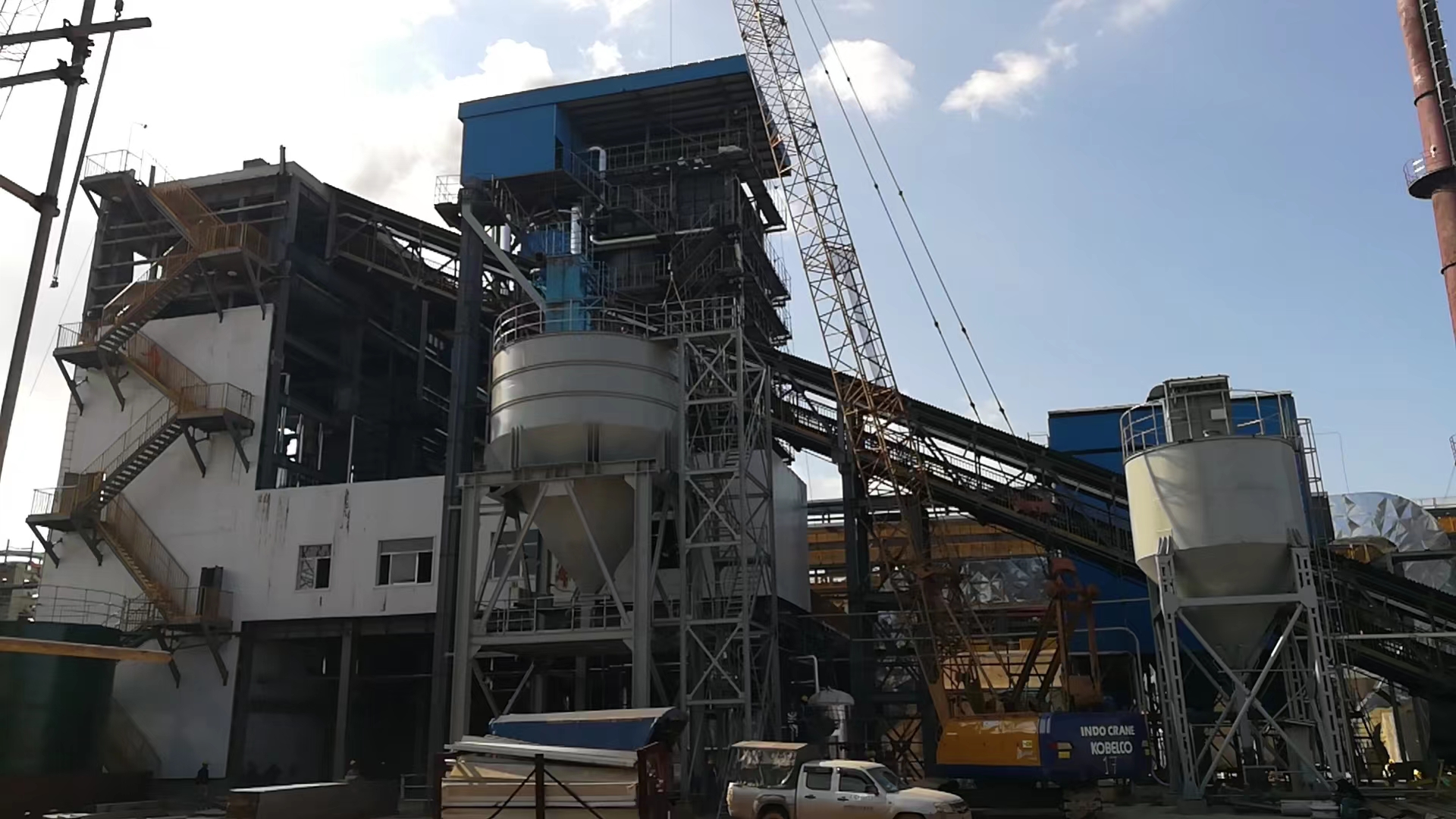
What Are the Benefits of Dual-Fuel or Multi-Fuel Boiler Systems?
Relying on a single fuel source for your industrial boiler can leave you vulnerable to price spikes, supply disruptions, or changing environmental regulations. Many facilities that operate 24/7—such as food processing plants, chemical manufacturers, and district heating networks—cannot afford production downtime due to fuel availability issues. Dual-fuel or multi-fuel boiler systems are engineered to burn more than one fuel type, giving businesses both flexibility and resilience in operations.
Dual-fuel or multi-fuel boiler systems allow operators to switch between fuels—such as natural gas, fuel oil, coal, or biomass—depending on price, availability, or emissions requirements, improving energy security, reducing operating costs, and enabling compliance with evolving environmental regulations while maintaining high system reliability.
In competitive industries, this flexibility can directly impact profitability and uptime.
Switching fuels in a dual-fuel boiler always requires major mechanical modifications.False
Dual-fuel boilers are specifically designed for seamless fuel switching, often with automated controls that require minimal downtime.
🔹 Key Benefits Overview
| Benefit | Description | Example Scenario |
|---|---|---|
| Fuel Cost Optimization | Switch to the most cost-effective fuel based on market prices | Use natural gas in summer when cheap, switch to oil in winter |
| Energy Security | Maintain operations during supply interruptions | If gas supply is cut, switch to stored diesel fuel |
| Regulatory Compliance | Meet emissions targets by choosing cleaner fuels when required | Switch from coal to biomass during seasonal air quality alerts |
| Operational Flexibility | Adapt fuel mix to seasonal or production changes | Increase biomass use during agricultural waste season |
| Reduced Downtime Risk | Prevent shutdowns due to fuel shortages | Multi-fuel backup ensures production continuity |
| Lower Carbon Footprint | Choose renewable or low-carbon fuels to meet sustainability goals | Co-fire biomass with coal to reduce CO₂ emissions |
📊 Typical Fuel Combinations for Dual/Multi-Fuel Boilers
| Configuration | Primary Fuel | Secondary/Alternate Fuels | Best Use Cases |
|---|---|---|---|
| Gas/Oil | Natural Gas | Diesel, Heavy Oil | Industrial plants, district heating |
| Coal/Biomass | Coal | Wood Chips, Agricultural Waste | Pulp & paper mills, power plants |
| Biomass/Gas | Biomass | Natural Gas | Food processing, municipal heating |
| Gas/Oil/Biomass | Natural Gas | Diesel + Biomass | Energy-intensive industries with seasonal fuel changes |
✅ Practical Tips for Buyers
When designing for multi-fuel use, prioritize the most frequently used fuel for optimum efficiency
Consider automatic fuel switching controls for faster response to market or supply changes
Ensure emissions control equipment is compatible with all fuels in your plan
Factor in storage and handling systems—especially for solid fuels like biomass or coal
Work with an OEM to evaluate burner and furnace design requirements for each fuel
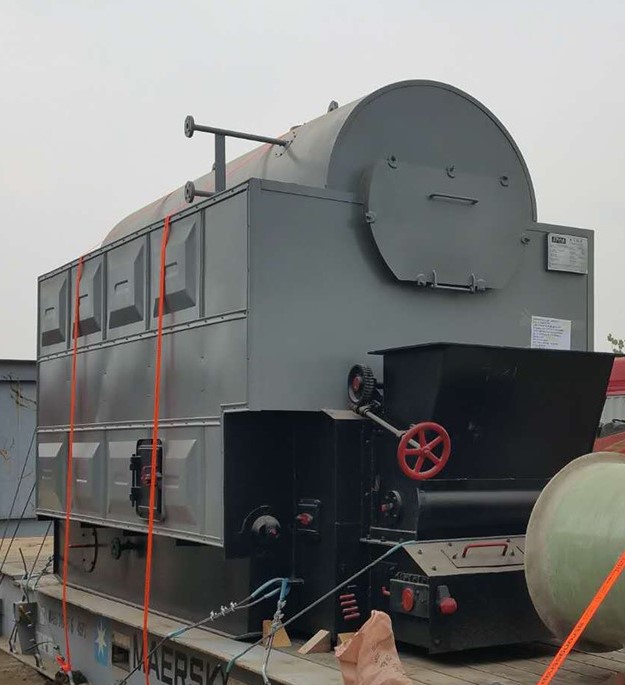
How Do Fuel Properties (Calorific Value, Moisture, Ash Content) Impact Boiler Performance?
Choosing the wrong fuel—or not understanding its characteristics—can dramatically reduce your boiler’s efficiency, increase maintenance costs, and shorten equipment life. Many industrial boiler issues, from incomplete combustion to slag buildup, can be traced back to mismatched fuel properties. By knowing the calorific value, moisture content, and ash content of your fuel, you can predict performance, optimize operation, and prevent costly downtime.
Calorific value determines the heat output per unit of fuel, moisture content affects combustion efficiency and fuel handling, and ash content influences slagging, fouling, and maintenance frequency—together these properties directly impact boiler thermal efficiency, emissions, and long-term reliability.
Understanding these parameters helps operators select fuels, adjust firing systems, and schedule maintenance with confidence.
High-moisture fuels improve boiler efficiency by creating more steam during combustion.False
High moisture reduces combustion temperature, lowers efficiency, and can cause corrosion from acidic condensates.
🔹 Key Fuel Properties and Their Boiler Effects
| Property | Definition | Impact on Boiler Performance | Typical Mitigation |
|---|---|---|---|
| Calorific Value | Heat energy released per unit mass or volume | Higher value = more heat, less fuel needed; low value increases fuel consumption | Adjust fuel feed rate, improve combustion controls |
| Moisture Content | Water present in fuel | Absorbs heat to evaporate water → reduces efficiency, lowers furnace temperature | Pre-dry fuel, optimize combustion air supply |
| Ash Content | Non-combustible residue after burning | Causes slagging, fouling of heat surfaces, wear on handling equipment | Install soot blowers, select low-ash fuel |
📊 Example: Impact of Fuel Properties on Steam Output
| Fuel Type | Calorific Value (MJ/kg) | Moisture (%) | Ash (%) | Relative Boiler Efficiency |
|---|---|---|---|---|
| Natural Gas | 50+ | <1 | 0 | Very High (~92–95%) |
| Bituminous Coal | 24–30 | 5–12 | 8–15 | High (~85–88%) |
| Biomass (Wood Chips) | 14–18 | 20–50 | 1–5 | Moderate (~70–80%) |
| Lignite | 8–14 | 25–40 | 5–10 | Low (~65–75%) |
✅ Practical Operator Tips
Always test new fuel batches for calorific value, moisture, and ash before full use
Maintain consistent fuel quality to avoid unstable combustion and efficiency loss
Install fuel pre-treatment systems (drying, screening) for high-moisture or high-ash fuels
Monitor flue gas composition to detect incomplete combustion early
Work with your supplier to match burner design to fuel type for optimal results
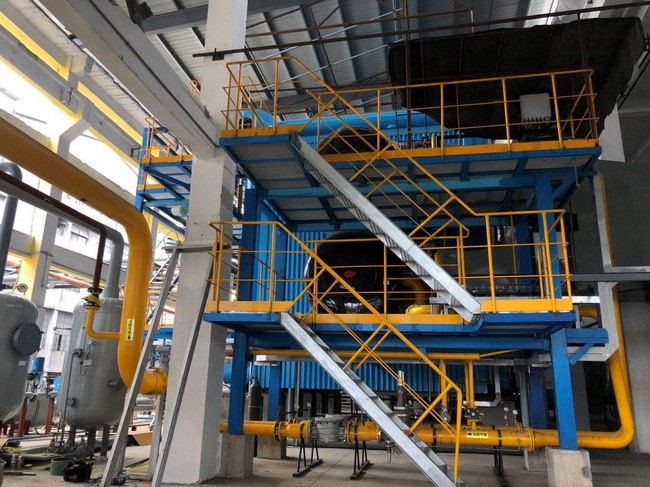
What Emission Control Measures Are Needed for Different Fuels?
Different boiler fuels release different pollutants, and failing to match the right emission control system can lead to non-compliance, fines, and production shutdowns. Each fuel type—whether coal, oil, gas, or biomass—produces a unique mix of particulate matter, sulfur oxides (SOx), nitrogen oxides (NOx), and other pollutants. The right combination of control technologies ensures your boiler meets environmental standards while maintaining efficiency.
Coal and heavy oil often require multi-stage controls (dust collectors, scrubbers, desulfurization, and low-NOx burners), biomass typically needs particulate and VOC controls, while natural gas mainly focuses on NOx reduction—choosing the right measures depends on the fuel’s emission profile and local regulations.
Matching your fuel type to the right emission system is not just a compliance task—it’s a strategic investment in reliability and sustainability.
Natural gas combustion requires no emission control equipment due to clean burning.False
While natural gas is cleaner than solid fuels, it still produces NOx emissions that often require control measures such as low-NOx burners or SCR systems.
🔹 Common Fuel Types and Matching Emission Controls
| Fuel Type | Major Pollutants | Recommended Control Measures |
|---|---|---|
| Coal | Particulate matter, SOx, NOx, mercury | ESP or baghouse, wet/dry scrubber, flue gas desulfurization, SCR/SNCR |
| Heavy Fuel Oil | SOx, NOx, particulates | Wet scrubber, low-NOx burner, ESP |
| Biomass | Particulates, VOCs, NOx | Cyclone or baghouse, thermal oxidizer, low-NOx burner |
| Natural Gas | NOx | Low-NOx burner, flue gas recirculation, SCR/SNCR |
| Petroleum Coke | SOx, particulates, heavy metals | ESP, scrubber, desulfurization |
📊 Example: Pollutant Levels by Fuel Type (Typical Range)
| Fuel | PM (mg/Nm³) | SOx (ppm) | NOx (ppm) | Common Tech Used |
|---|---|---|---|---|
| Coal | 50–200 | 500–2000 | 200–500 | ESP + FGD + SCR |
| Heavy Fuel Oil | 30–150 | 1000–3000 | 150–400 | Scrubber + Low-NOx Burner |
| Biomass | 50–300 | 50–300 | 150–350 | Baghouse + Cyclone |
| Natural Gas | <10 | <20 | 50–150 | Low-NOx Burner + SCR |
✅ Practical Implementation Tips
Always perform a fuel emission profile test before selecting control systems
Check local regulatory emission limits—these often dictate the required technology
For solid fuels, combine particulate and gas phase controls for best results
For high-SOx fuels, desulfurization systems are essential for compliance
Consider multi-pollutant systems for flexibility in switching fuels
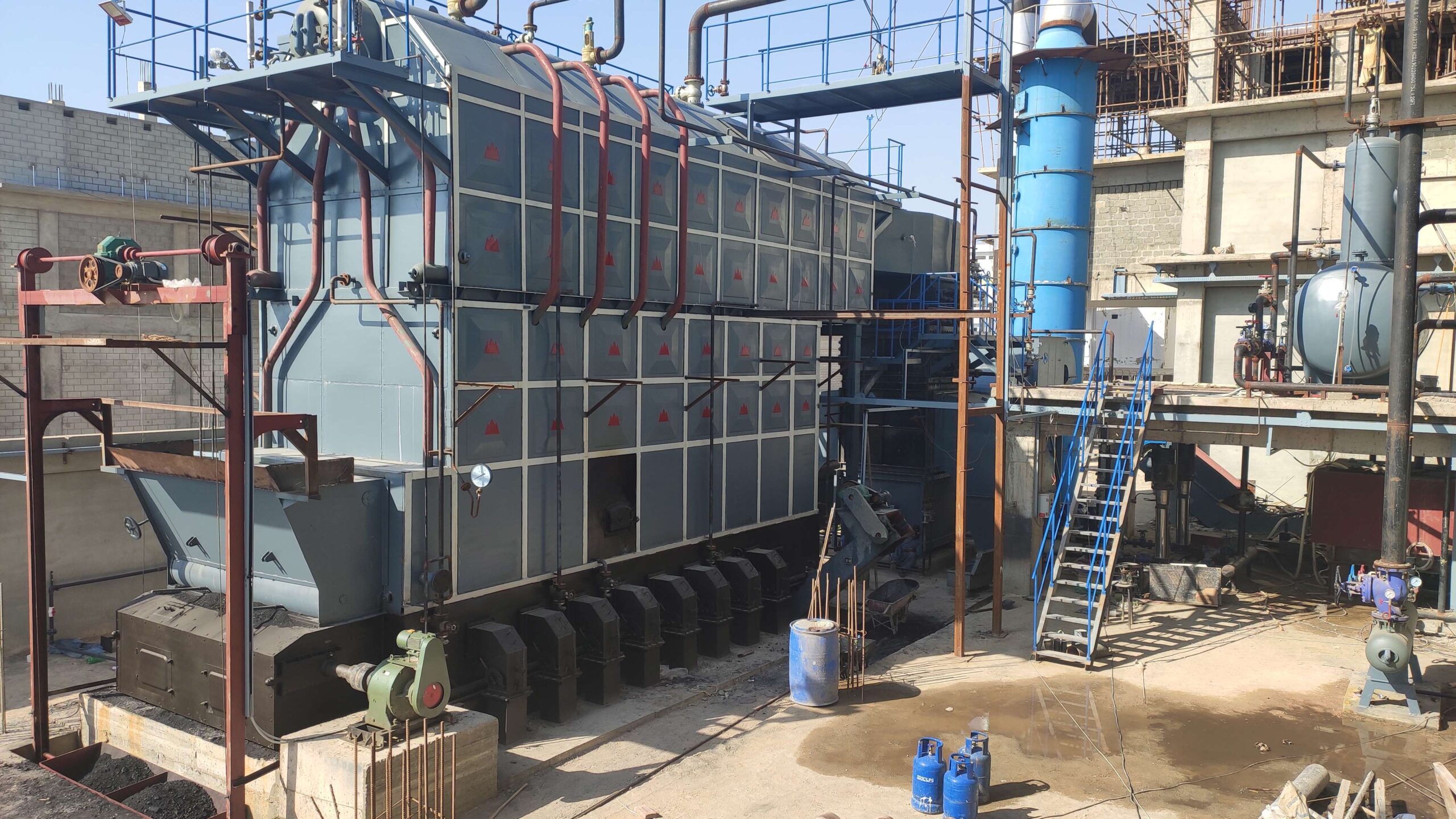
How Can Facilities Future-Proof Their Boiler Investment for Potential Fuel Switching?
Investing in a boiler is a long-term commitment, and locking into a single fuel can limit operational flexibility, increase exposure to market volatility, and risk non-compliance with future emission regulations. Many facilities discover too late that adapting an existing system to a new fuel is costly and time-consuming. Designing with fuel-switching readiness from the start—through proper burner selection, material compatibility, and auxiliary system flexibility—can safeguard your investment, reduce downtime, and keep options open as energy prices and regulations evolve.
Facilities can future-proof their boiler investment by selecting multi-fuel compatible designs, modular combustion systems, corrosion- and temperature-resistant materials, scalable emission controls, and adaptable fuel handling infrastructure—allowing for smoother transitions between coal, gas, biomass, or other fuels with minimal retrofitting.
Building flexibility into your boiler project now avoids costly retrofits later and ensures energy security regardless of market or policy changes.
All industrial boilers can easily switch between any fuels without major modifications.False
Fuel switching often requires changes to burners, controls, fuel feed systems, and emission control equipment. Only boilers designed with multi-fuel capability from the start can switch with minimal modifications.
🔹 Key Design Features for Fuel-Switching Readiness
| Design Area | Future-Proofing Measure | Benefit |
|---|---|---|
| Burner & Furnace Design | Dual-fuel or modular burner assemblies | Supports rapid fuel changeover |
| Fuel Handling System | Modular conveyors, hoppers, or pipelines | Compatible with both solid and liquid/gaseous fuels |
| Pressure Parts | High-alloy or corrosion-resistant materials | Handles different combustion chemistry |
| Emission Controls | Scalable or multi-pollutant control systems | Avoids reinstallation when switching fuels |
| Control Systems | Programmable automation with multiple fuel profiles | Minimizes reprogramming cost |
📊 Example: Retrofit Cost Impact vs. Fuel-Ready Design
| Approach | Initial Cost | Future Fuel Switch Cost | Total 20-Year Cost |
|---|---|---|---|
| Standard Single-Fuel Boiler | Low | High | High |
| Multi-Fuel Ready Boiler | Moderate | Low | Moderate |
✅ Practical Tips to Plan Ahead
Conduct a fuel availability and price forecast for your region before finalizing boiler specs
Select burners with replaceable nozzles and adjustable air/fuel ratios
Design fuel storage and feeding systems with modular layouts for easy adaptation
Use digital combustion controls that can store multiple fuel firing curves
Ensure emission control equipment can handle future fuels’ pollutant profiles
🔍 Conclusion
Fuel compatibility in industrial boilers depends on design, combustion systems, and emission controls. Choosing a boiler with flexible fuel capability can reduce operating costs, ensure energy security, and meet evolving environmental regulations.
📞 Contact Us
💡 Need a fuel-flexible industrial boiler solution? We provide custom boiler designs, burner retrofits, and fuel conversion services to match your operational and environmental requirements.
🔹 Partner with us for a boiler system that works with your fuel strategy—today and in the future. 🔥⚡🌱✅
FAQ
What fuels can industrial boilers use?
Industrial boilers can operate on a wide range of fuels depending on design:
Coal – Common in large-scale plants, especially in regions with abundant reserves.
Natural Gas – High efficiency, low emissions, and widely available in developed markets.
Biomass – Renewable option using wood chips, pellets, agricultural residues.
Fuel Oil (Diesel/Heavy Oil) – Reliable for areas without gas supply or as backup.
Electricity – Zero on-site emissions, ideal for clean energy integration.
Waste Heat – From other industrial processes, improving overall energy efficiency.
Some modern units are multi-fuel capable, allowing switching based on cost and availability.
How does fuel type affect boiler performance?
Fuel choice impacts:
Efficiency – Gas and oil typically achieve higher thermal efficiencies than coal or biomass.
Maintenance – Solid fuels generate ash and slag, requiring more cleaning.
Startup/shutdown time – Gas and oil-fired units heat up faster than coal-fired ones.
Heat output stability – Liquid and gas fuels provide steadier combustion control.
Environmental footprint – Biomass and natural gas emit fewer greenhouse gases than coal.
Can a single industrial boiler run on multiple fuels?
Yes, dual-fuel and multi-fuel boilers can switch between fuels, e.g., gas/oil, coal/biomass, or gas/electric, based on:
Burner design (multi-fuel burners)
Combustion chamber flexibility
Fuel handling and feeding systems
Control system programming
This flexibility improves fuel security and mitigates price volatility.
Which fuel is most cost-effective for industrial boilers?
Cost-effectiveness depends on:
Local fuel prices and availability
Boiler efficiency with that fuel
Fuel handling and storage costs
Emission compliance costs (taxes, permits, carbon credits)
For example, coal is often cheapest per unit energy in developing countries, while natural gas may be more economical in gas-rich regions due to lower maintenance and emission costs.
What factors should be considered when selecting boiler fuel?
Key considerations include:
Fuel availability and long-term supply contracts
Boiler design compatibility
Emission regulations and environmental goals
Operational requirements (load variation, run hours)
Safety in storage and handling
Integration with other plant processes (e.g., CHP systems)
A detailed life-cycle cost analysis is recommended before finalizing fuel choice.
References
Spirax Sarco – Industrial Boiler Fuels Overview – https://www.spiraxsarco.com
Cleaver-Brooks – Multi-Fuel Boiler Systems – https://www.cleaverbrooks.com
Thermodyne – Fuel Types for Industrial Boilers – https://www.thermodyneboilers.com
Hurst Boiler – Biomass and Hybrid Boilers – https://www.hurstboiler.com
IEA – Fuel Switching in Industry – https://www.iea.org
BioEnergy Consult – Biomass Boiler Fuels – https://www.bioenergyconsult.com
EPA – Industrial Boiler Fuel Emission Factors – https://www.epa.gov
DNV – Fuel Selection Guidelines for Process Heating – https://www.dnv.com
Powerhouse – Boiler Fuel Comparison Guide – https://www.powerhouse.com
Engineering Toolbox – Energy Content of Fuels – https://www.engineeringtoolbox.com

